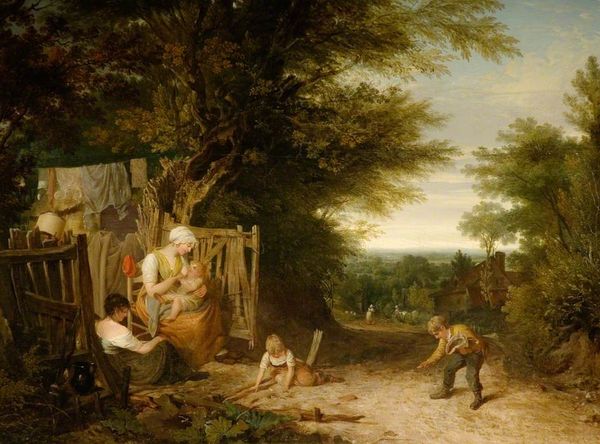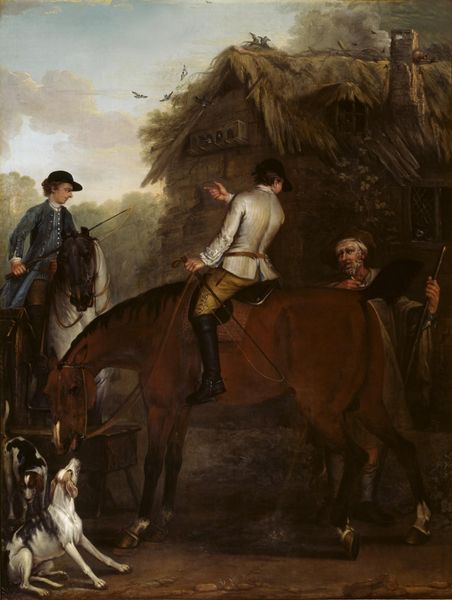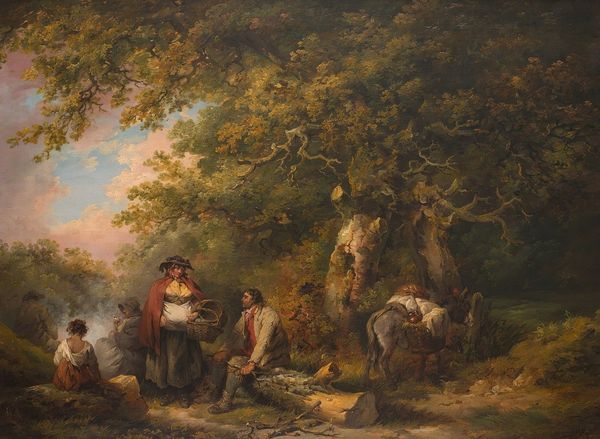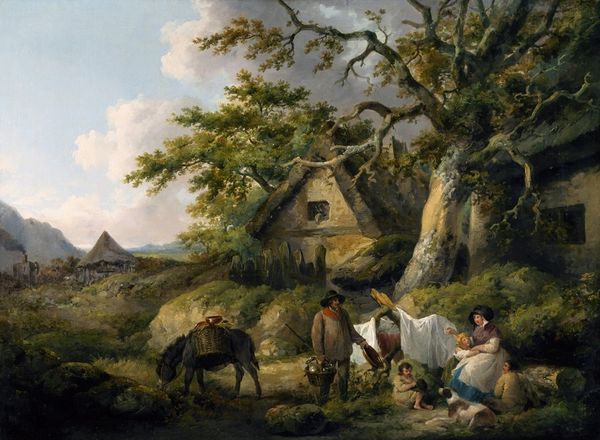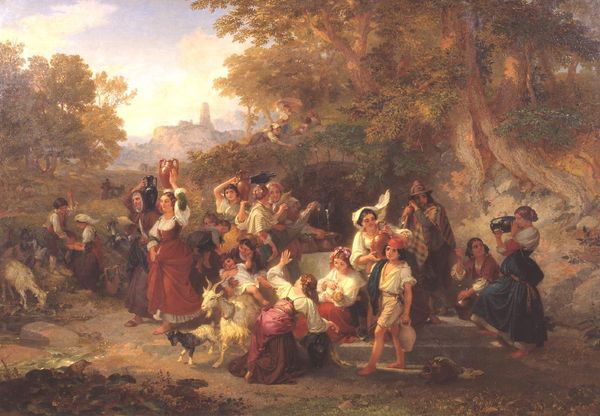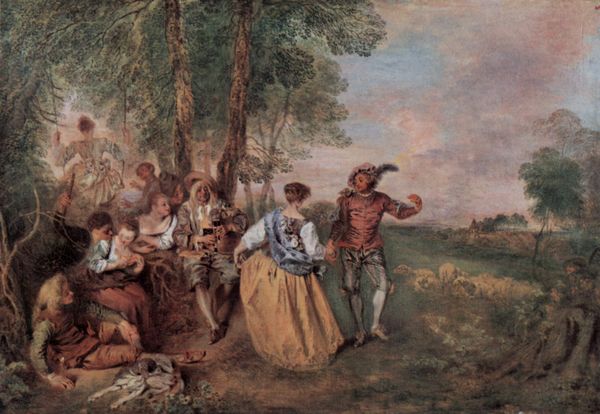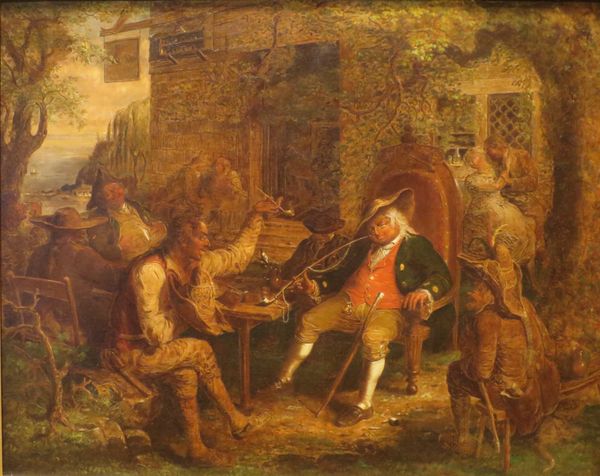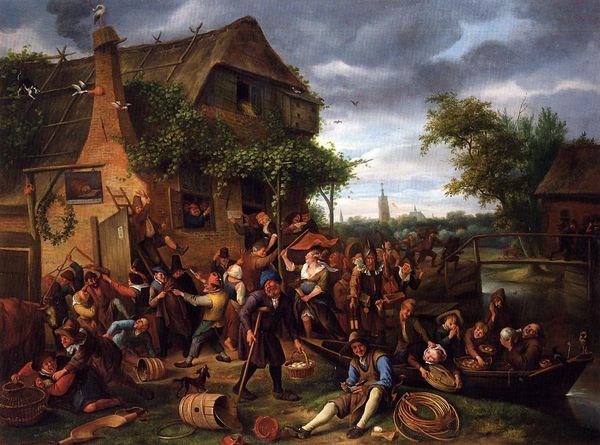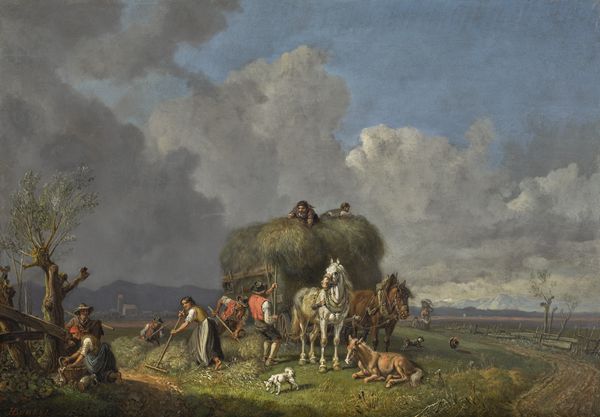
watercolor
#
gouache
#
landscape
#
impressionist landscape
#
figuration
#
watercolor
#
romanticism
#
genre-painting
#
watercolor
Copyright: Public Domain: Artvee
Curator: Editor: This watercolor, "Figures and Animals in a Vineyard" by John Frederick Lewis, made in 1829, has such a vibrant, almost idyllic quality to it. It makes me wonder about the daily life depicted, but how would you interpret this work through a materialist lens? Curator: Well, consider the materiality first. Lewis uses watercolor and gouache, humble materials, to depict what seems like a leisurely scene. But look closer. The emphasis on the labour involved in harvesting, evident in the heavily laden baskets, points towards the physical reality underpinning this idyll. Who are these figures, and what's their relationship to the vineyard itself? Are they landowners or labourers? Editor: That's interesting! I hadn't thought about the material contrast that way. I was mainly seeing the Romantic style and the apparent joy in the scene. But the baskets… yes, the weight seems important now that you mention it. How does the *making* of the painting contribute to its meaning? Curator: Lewis's technique itself, the layering of watercolour and the detail afforded by gouache, creates a sense of depth and richness, yes, almost like the bounty of a successful harvest. This very process mirrors the act of cultivation and production that's taking place within the vineyard. Consider the *production* of this piece for the art market – its consumption by a specific class with an appetite for such idealized scenes of labour. Editor: So, by examining the materials and how the painting was made, we're revealing the social dynamics embedded in the artwork? The labour behind the ‘idyll’ being commodified for consumption. I guess I was initially blinded by the surface appeal. Curator: Precisely! It forces us to question the romantic narrative and delve into the more complex reality of labour, class, and the art market itself in the 19th century. Editor: It's fascinating to see how shifting perspectives changes our reading of this work so much! Thank you, it has changed how I think about art in general, I'll start digging under the aesthetic surface.
Comments
No comments
Be the first to comment and join the conversation on the ultimate creative platform.
